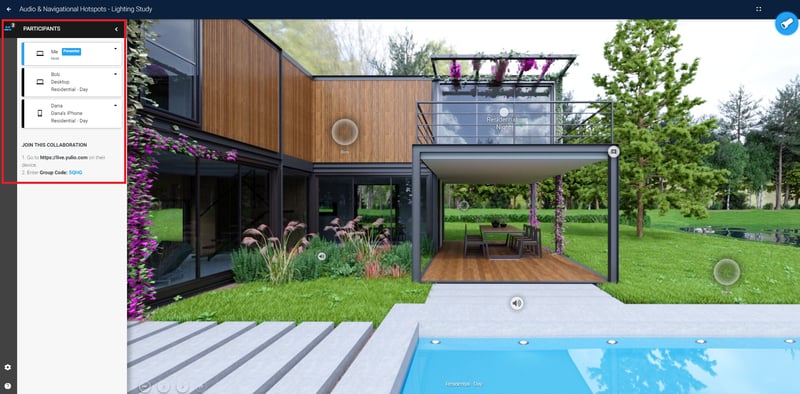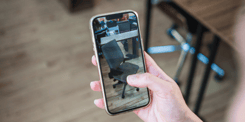With the potential to transform numerous industries like architecture and interior design, virtual reality is one tool that every designer should have in their toolkit. With the ability to immerse clients in their design, virtual reality has the power to engage clients, speed up the design process and improve communication overall, reducing unnecessary meetings. However, many professionals have yet to make the leap due to the perception that VR is expensive and that the high startup costs cannot justify the investment.
The good news is that while virtual reality does require the time and resources to start using the technology, you can actually save time and money using VR. Beyond opening up more opportunities for business, the technology itself can help designers work with clients much more efficiently as well as be used as an iteration tool.
But how exactly can VR do that? Today, we’ll be covering 3 key benefits VR brings that will help you work smarter and make the most out of your time and resources - let’s dive in.
.jpeg?width=800&name=BUSINESS%20READY%20VR%2076%20(1).jpeg)
1. Solve Problems
2D renderings, floor plans, physical models, replicas are just some of the industry-standard visual tools that will enable you to communicate your vision and design intention. Any pitch or presentation should include a plethora of these visualization methods to help your clients understand the direction and approach you are adopting, and, hopefully, sell them on your design concept. However, while each plays a crucial role in illuminating certain aspects of your design, they all can only reveal so much, especially when it comes to finding and solving issues with the design.
Virtual reality is the closest thing we have to being actually inside a space, and it is this ability that separates this technology from other traditional visualization methods. Prior to viewing in VR, sightlines and other obscurities were barely noticeable until a space had been constructed. And it is these small oversights that will put further pressure on both the budget and the project deadline, resulting in more time going back and forth, construction delays, and overspending.
Viewing spaces in virtual reality has all the magic of constructing a space, without any construction required. The investment to get started with VR is most probably lower than what you’re expecting it to be, especially when using mobile VR tools just like Yulio. Not only do you get access to a range of client-facing enhancement tools, but you can virtually tour your own design to double-check and further inspect your design solutions. Plus, what you see in virtual reality is what you get, and using VR as an iteration tool increases your chances of seeing problems before anything is built and getting it right the first time. It’s a whole lot cheaper to predict these issues before the hammer and nails come out.
%20(1).jpeg?width=799&name=BUSINESS%20READY%20VR%2084%20(3)%20(1).jpeg)
2. Travel Less
While face-to-face meetings can prove to be an effective way to collaborate with clients, sometimes this practice is not possible. Perhaps your client’s office is located way beyond reasonable travelling distance or circumstances prevent teams to meet in person. However, anyone who deals with high-touch clients knows that getting on the road, if you’re able to, can be more than an inconvenience: it’s also a huge time-waster.
Although we will never claim that virtual reality should (or will) replace real human interaction, it can certainly reduce the need for unnecessary touchpoints. With online VR tools, you can easily send the link to your client’s project for further feedback, comments and revisions. Not only will this save you the trip going there and back, but your clients can make informed design decisions without leaving their workspace or even from the comfort of their own home. Regardless of location, VR is adaptable and accessible, allowing you to bring your designs directly to your client no matter where they are.
Many of our users have reported that by using Yulio they have cut down on client visits by about 50%. And the best part is that virtual reality communicates your vision so clearly that clients continue to stay up to speed, included, and a part of the design process.

With Collaborate, see who has joined your session on the lefthandside.
3. Shorten the Collaboration Process
One common misconception non-VR users have is that because VR headsets can only accommodate one person at a time, virtual reality is isolating. While it’s true - current VR headset technology can only support one user at a time - the experience itself doesn’t have to be.
We knew that having a lack of client engagement within the VR experience would be a huge barrier for those looking to apply VR in a business context. Especially for commercial design professionals, where the designer-client collaboration relationship needs to be strong, having the right tools and channels is of utmost importance. That’s why with Collaborate, you can meet and work with your clients in the context of your VR project.
The beauty that comes with collaborating within your VR project is that you’re able to bounce ideas and receive real-time feedback right inside your design. Plus, you’re able to do so in a way where your clients are able to instantly understand your design. Traditional visualization methods like floor plans can be confusing to decipher to those without a design background. Some of our users shared that prior to using VR, they found a lot of their clients struggled with spatial understanding and how each piece of their design would fit together. However, with virtual reality, what used to take hours or even days to make decisions about certain elements of a design, VR reduces it to seconds. The more they can see and experience your design, the less talking you have to do.
VR - An ROI Driver
There’s a reason why at Yulio we call VR an ROI driver - it’s because experiencing your design will lead to shortening the design cycle, reducing iterations, and enabling faster collaboration between designer and client. Not to mention how it gives your clients greater confidence before giving the final sign-off and prevents late-stage changes. This is all possible by removing ambiguity from your conversations and communicating more clearly and efficiently. And by completing projects on time or even ahead of schedule, your team can utilize their time better, anticipate the next project, and look ahead with the power of VR.
For more information on how you can integrate VR into your business for a great ROI, download our free resource here for a full guide. If you’re ready to get started and jump in, click here to sign up for our free 30-day trial that will give you access to our full Yulio platform and its enhancement features.







